Nuclear Power Stations
This feature examines the Hunterston facility in Ayrshire, Scotland, to illustrate the layout of a typical nuclear power station in the UK. In common with coal and oil-fired power stations, electricity is produced by heating water to create steam, which is then used to turn a turbine to generate electricity. In a nuclear power station, however, the fuel is uranium, which produces heat by nuclear fission.
With no ore stockyard or coal conveyors, a nuclear power station has a smaller footprint than a conventional coal-fired thermal power station. Also, as heat is not produced by burning, there are no smoke stacks present, which serves to make such facilities appear clean and tidy on aerial imagery. To address the security and safety concerns posed by nuclear power stations, it is normal to observe several generations of reactor at the same site.
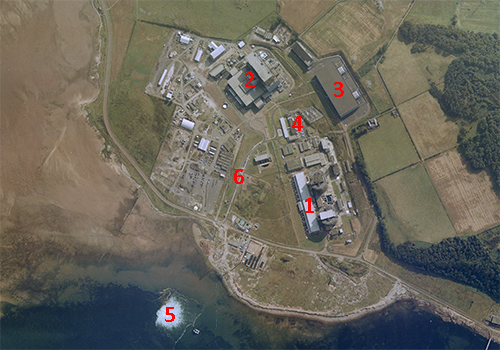
|
1. MAGNOX REACTORS
Magnox gas-cooled reactors were the earliest British-designed nuclear reactors and were installed at eleven sites in the UK. Two reactor vessels were installed at Hunterston, housed in the cylindrical towers seen at the centre of this image.
The reactors at this site were built in a raised position to allow refuelling from below. The turbines are co-located in the adjoining generator hall, on the left.
|
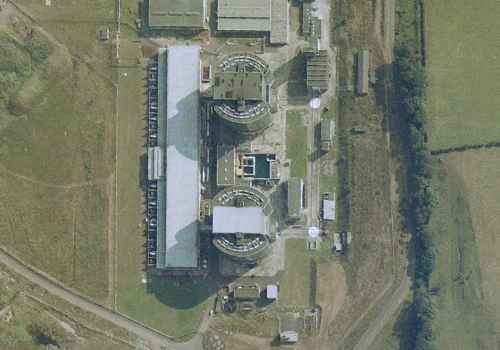 |
|
2. AGR REACTORS
Advanced Gas-cooled Reactors (AGR) were installed at the second generation of British nuclear power stations. At Hunterston, two reactor vessels are housed in the box-like building seen on the right in this image, with turbines located in the adjoining generator hall, to the left.
A back-up oil-fired power station is located adjacent to the reactor building (at upper left), to provide a failsafe supply of emergency electrical power to the reactor.
|
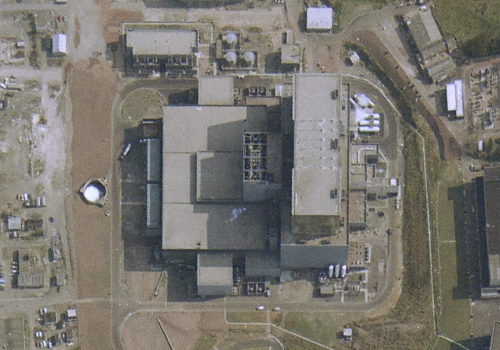 |
|
3. TRANSFORMER YARD
Electricity generated at the station is distributed to consumers via the National Grid. Transformers step-up the voltage for onward transmission by overhead power cables suspended from steel pylons. In this image, powerlines are visible leading from the transformer yard to upper right.
|
 |
|
4. ADMINISTRATION & SUPPORT
Located between the two reactor buildings is the administration block, with a staff car park area adjacent. Here, staff manage the operation and security of the facility.
|
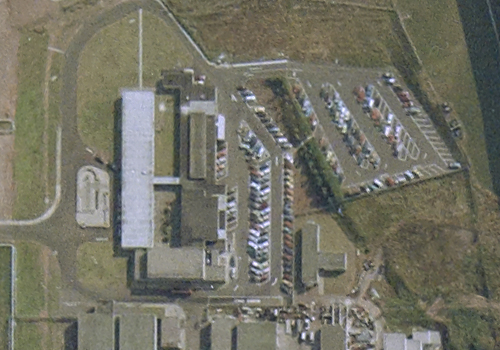 |
|
5. COOLING
Sea water is pumped into the power station to cool the steam condensers, before being released back into the sea. This image shows warm sea water being flushed from the outfall pipe, indicating that at least one reactor is in operation.
|
 |
|
6. SECURITY
To control access to the power station, a guardhouse is provided at the main entrance. Here, visiting vehicles are channelled into a separate lane while security personnel check access permits. Moveable barriers prevent unauthorised access and a continuous security fence encloses the whole site.
|
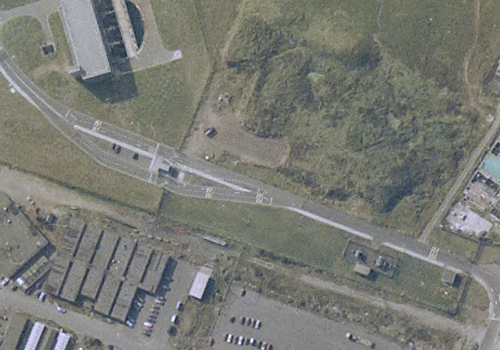 |

